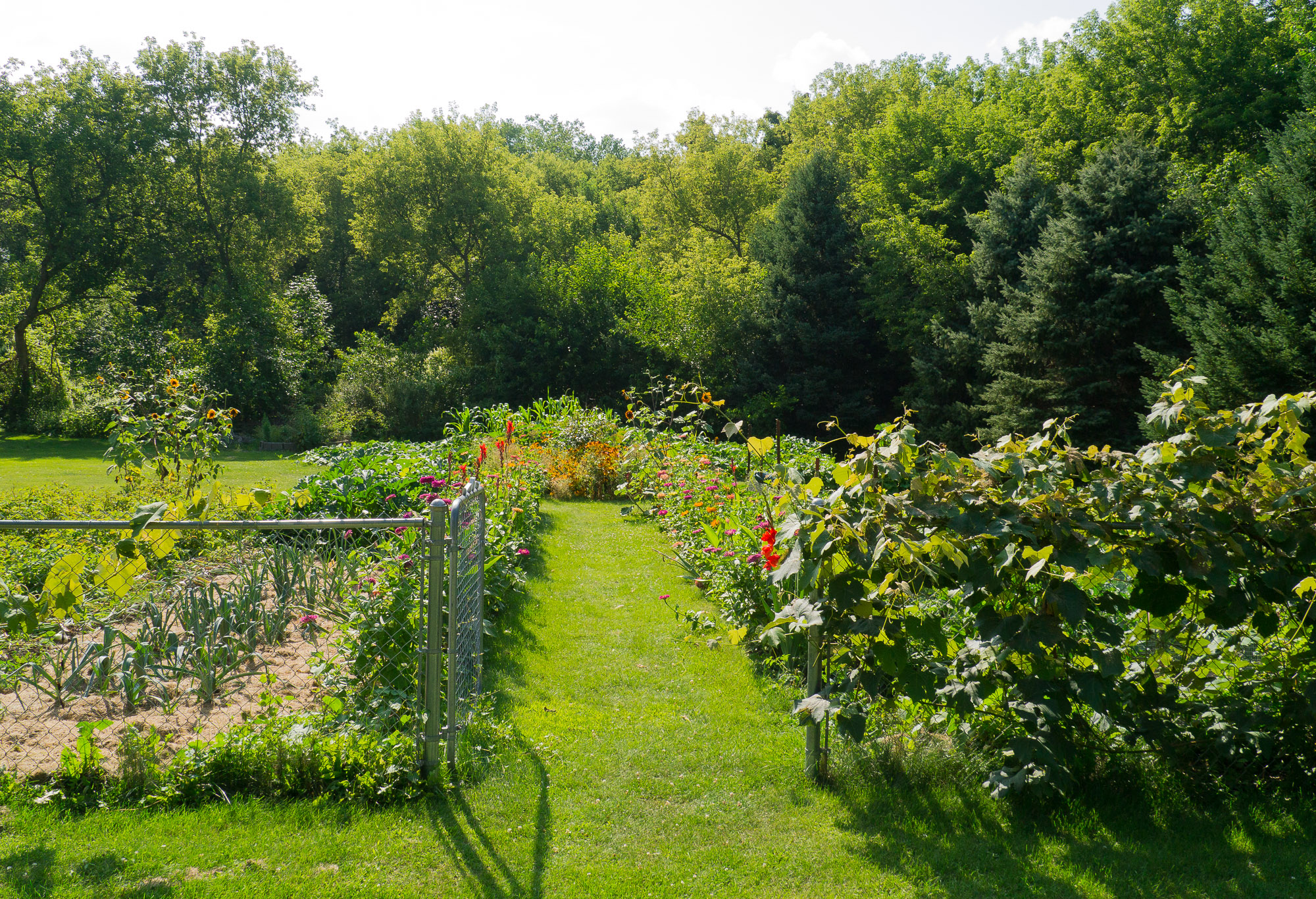Haven of Heather Organic Farm resulted from my desire to be more sustainable and offer the most nutrient dense and delicious food to my family. Not only does growing food nurture our bodies but it also nurtures something deep inside me. I can be an artist who takes pride in her work every time a friend walks through my garden gates. It also gives me a meditative practice of daily observation. During the growing season, I take a morning walk through the garden to observe. Observation is a great teacher and connector.
Gardening also links me to my ancestors. My paternal and maternal grandparents had amazing gardens. I loved tasting fresh raspberries, gooseberries and currants in a tapestry of flowers and berries that my grandparents had created. I always grow the three sisters (squash, beans, and corn) to honor ancestral wisdom and to keep the neighborhood raccoons from chomping on my corn.
Gardening comes with its own rewards and challenges. Have you ever tried to grow your own food? I find that I’m more excited about cooking and eating healthy foods when I’ve grown them myself or purchased them from a local farmer friend.
Do you have a small patch of earth to play with? Rainbow chard, lettuce, kale, or herbs can enhance the beauty of a container garden or flower bed. If you fear rabbits might demolish your efforts, you could try growing foods they don’t like such as: potatoes, tomatoes, leeks, onions, garlic, peppers, cucumbers, or zucchini.
I live in Wisconsin and our outdoor growing season starts as soon as the soil can be worked, around April 15th. When spring is in the air, you can start chard, lettuce, kale, and spinach.
Container Gardening:
Find a sizable container and a nice sunny location near a water source. I like to keep my herbs on my deck with easy access to the kitchen sink.
Mix 1/3 organic compost to 2/3rds soilless organic potting mix. I usually mix the soil in my wheelbarrow.
Water the soil thoroughly. This process is sometimes easier outside the container. You want the soil evenly damp but not soggy.
It is best to add the soil to the container when the container is in it’s permanent position (because the container will get very heavy)!
If you’re growing from seed, remove a handful of soil from the pot and set aside. Arrange your seeds keeping in mind the size of the full grown plant. Spacing is often written on the seed package. The soil you place on top is about as big as the seed. Bean seeds are big and more soil is placed on top. Lettuce seeds are very small and need sunlight to germinate. Only sprinkle an idea of soil on lettuce or gently press the seeds into the soil. Gently mist or sprinkle water on top. Keep seeds moist until germination.
If you’ve purchased plants from a greenhouse, start by digging a small hole. Gently wiggle the plants roots from the container and place it in the hole. Gently but firmly press the soil around the plant. Making a concave pool around the plant helps direct water to its roots. Water lightly.
After danger of frost, add some favorite flowers to your container, herbs, or edible flowers!
Water regularly and take time to observe your plants and soil. Containers do dry out faster than ground garden beds.
Harvest leaves as desired, just make sure the plant still has a leaf that can produce photosynthesis and keep it going.
The flavor of leaves will change depending on temperature. Lettuce and spinach will provide a few harvests then turn bitter. When your lettuce turns bitter you can remove it and replant. Chard and Kale will change in flavor throughout the seasons too.
Happy Harvest!
